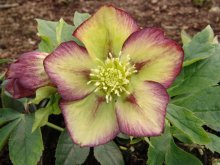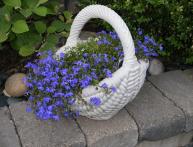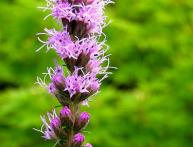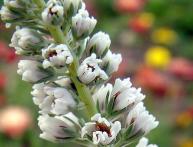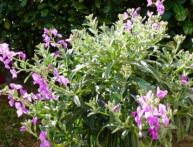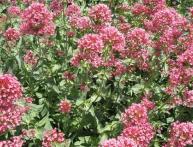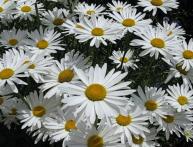Eastern hellebore: description, varieties, planting and care
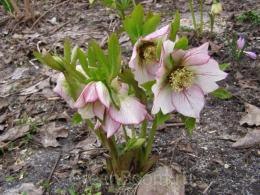
The genus of herbaceous plants Hellebore belongs to the Ranunculaceae family. It includes 15 species. The most popular among gardeners is the oriental hellebore. It is he and his hybrid forms with various colors of flowers find their fans. In addition, the plant has a number of properties that make hellebore a desirable resident of any flower garden.
Content:
- Oriental hellebore, plant description
- Choosing a place for hellebore, planting
- How to care for hellebores in the garden
Oriental hellebore, plant description
The plant got its name from the fact that in climates with mild winters, such as those found in the Balkans or the Caucasus, it blooms already in February, when winter frosts have not gone away. The plant is not tall, its size does not exceed 30 cm. Oriental hellebore is popular because it:
- refers to perennials
- blooms very early
- frost-resistant during flowering period
- winters without shelter
- can grow in one place for many years
- cold resistant
In central Russia, flowers of oriental hellebore can be seen already in the third ten days of March. If snow falls at this time and the temperature drops to -5 - 6 degrees, then the plant continues to bloom and its flowers are not damaged by snow or frost. Its flowers have an interesting shape, what is usually mistaken for a flower are its sepals, but the flower itself is sometimes very modest.
Currently, breeders have obtained many varietal and hybrid hellebores, which are distinguished by the clean and bright color of fairly large, up to 8.0 cm, flowers.
Known varieties:
- Blue anemone, soft lilac flowers
- White Swan, white flowers
- Rock and roll, flowers with dark speckles
In addition, in Germany a varietal group of hellebores was obtained, which was combined into the Lady series, since the name of each plant includes the word lady. All varieties from this group differ in flower color, among them there are:
- pink with red spots
- white with red spots
- light pink
- dark red
- dark purple
- creamy lemon
- purple, shimmering blue
Plants from the named varietal group have fairly tall stems, up to 40 cm, and bloom in a temperate climate in mid-April. Flowering duration is about two weeks. These varieties They reproduce well by seeds, in 80% of cases retaining the characteristics of the parent plant. Let's try to find out where and how to plant oriental hellebore in the garden.
Choosing a place for hellebore, planting
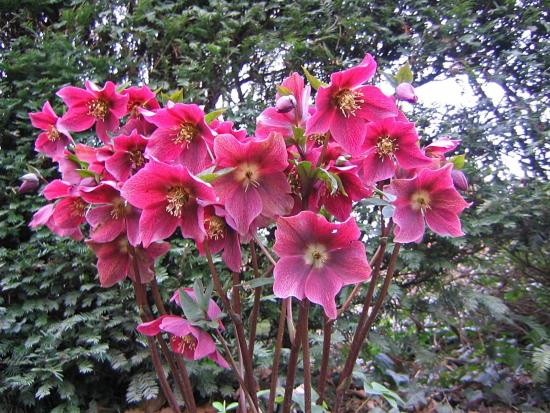
Places shaded by the foliage of trees and shrubs are suitable for planting hellebores in the garden. In exceptional cases, you can plant in good light, or in almost total shade. For successful cultivation in bright sun, it is advisable to organize regular watering. Any soil is suitable, but it grows very well in areas with clay soil and a neutral reaction. The soil should be moderately moist, without drying out, but also without prolonged stagnation of water.
Oriental hellebore propagates by seeds and division.In order not to waste time on lengthy stratification of seeds, which requires keeping them in certain conditions for many months after sowing in a pot, you can proceed in a simpler way. To do this, in the summer, around the second half of June, you need to collect ripened seeds. Immediately sow them in open ground, so that there is at least 2.5 months before the cold snap.
Shoots will appear next spring. At the stage of two to three leaves, the seedlings dive. At transplantation you need to maintain a distance of about 15 - 20 cm between seedlings. When three years have passed, young hellebores are placed in permanent places.
This method of planting is more profitable, since hellebore seeds are very poorly stored, they are often affected by mold fungi, rot and lose their viability within the first year of storage.
Hellebore should be propagated by division in early spring. An adult plant is dug up and divided into 2 - 3 parts. The soil for new plantings is well dug up. You can add lime when digging if the soil is very acidic. Holes are made in the soil, about 30 cm in diameter. The distance between the holes is 40 cm. Immediately after planting, water well. In addition, in the first days after planting, the plants need to be watered regularly.
The disadvantage of this method of propagation is that the plant does not tolerate division very well, it can get sick for a long time and stop blooming. Therefore, if it is possible to obtain hellebore seeds for sowing, it is better to use the first method. Varietal hellebores bloom in the second or third year after sowing, ordinary ones bloom in the third to sixth year.
Some types of hellebore are poisonous and are used in folk and official medicine.The roots and rhizomes contain cardiac glycosides, which are used in cardiological practice. Although in many cases treatment with hellebore is abandoned due to its high toxicity.
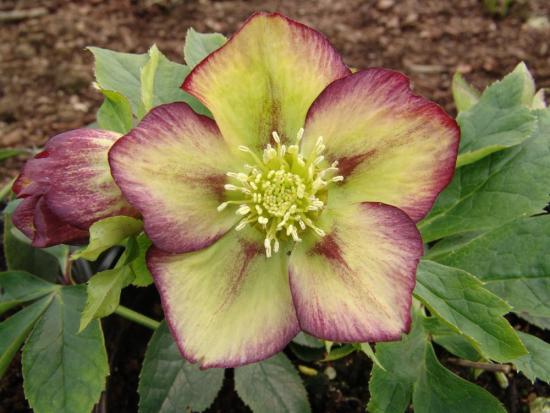
Oriental hellebore has mainly decorative uses. It is used for alpine slides, for group plantings along with other primroses. Even after blooming, hellebore retains its aesthetic appearance thanks to its bright green leaves. It looks like this until winter and even under the snow its leaves can be green. Despite all its unpretentiousness and endurance, the oriental hellebore needs some care.
How to care for hellebores in the garden
When the plant fades, you need to remove the weeds. After this, all the soil near it must be thoroughly mulched. Well-decomposed peat or compost is suitable for this. You can add ground chicken egg shells to the peat. In dry summers it needs watering. Sometimes it happens that hellebores are attacked by pests:
- aphid
- slugs
- snails
Against aphids can be treated with any insecticidal preparation, and slugs and snails can be collected and removed from the plants. If the summer is damp and warm, then brown spots appear on the leaves, increasing in size daily. This means that the plant is infected with a fungus. To stop the disease, the above-ground affected parts are cut out at the root. Then the plantings are treated with a solution of any systemic fungicide.
The plant responds well to the application of organic fertilizers. Meat and bone meal will cope with this role. This needs to be done in early spring, then the plant will not only bloom magnificently and for a long time, but also delight the eye with its bright, rich green leaves.On dry days, the plant can be sprayed with a solution of mineral foliar feeding. By and large, hellebore refers to plants that planted and forgot, but they grow and delight the eye without much care.
Video about oriental hellebore:


